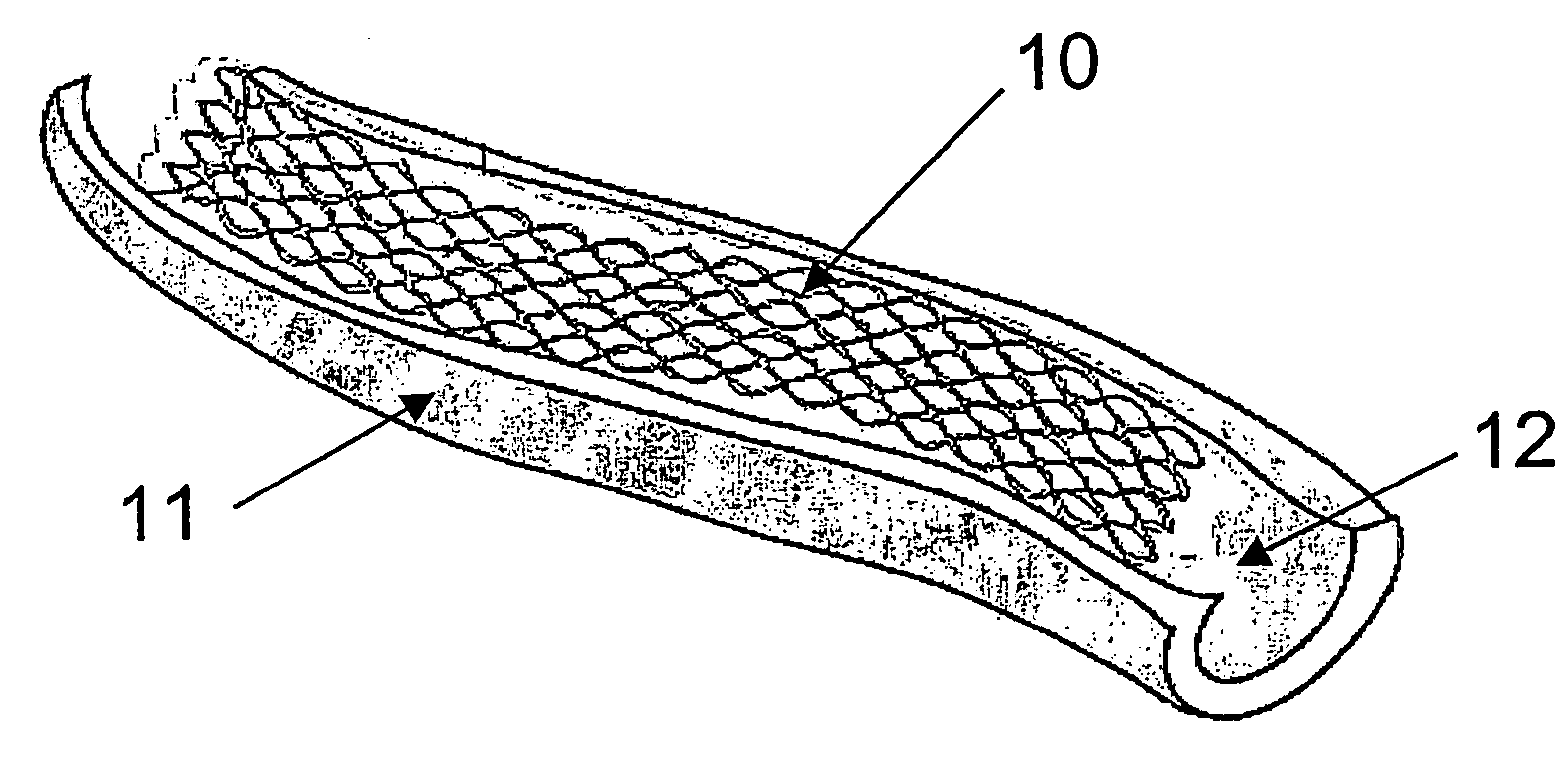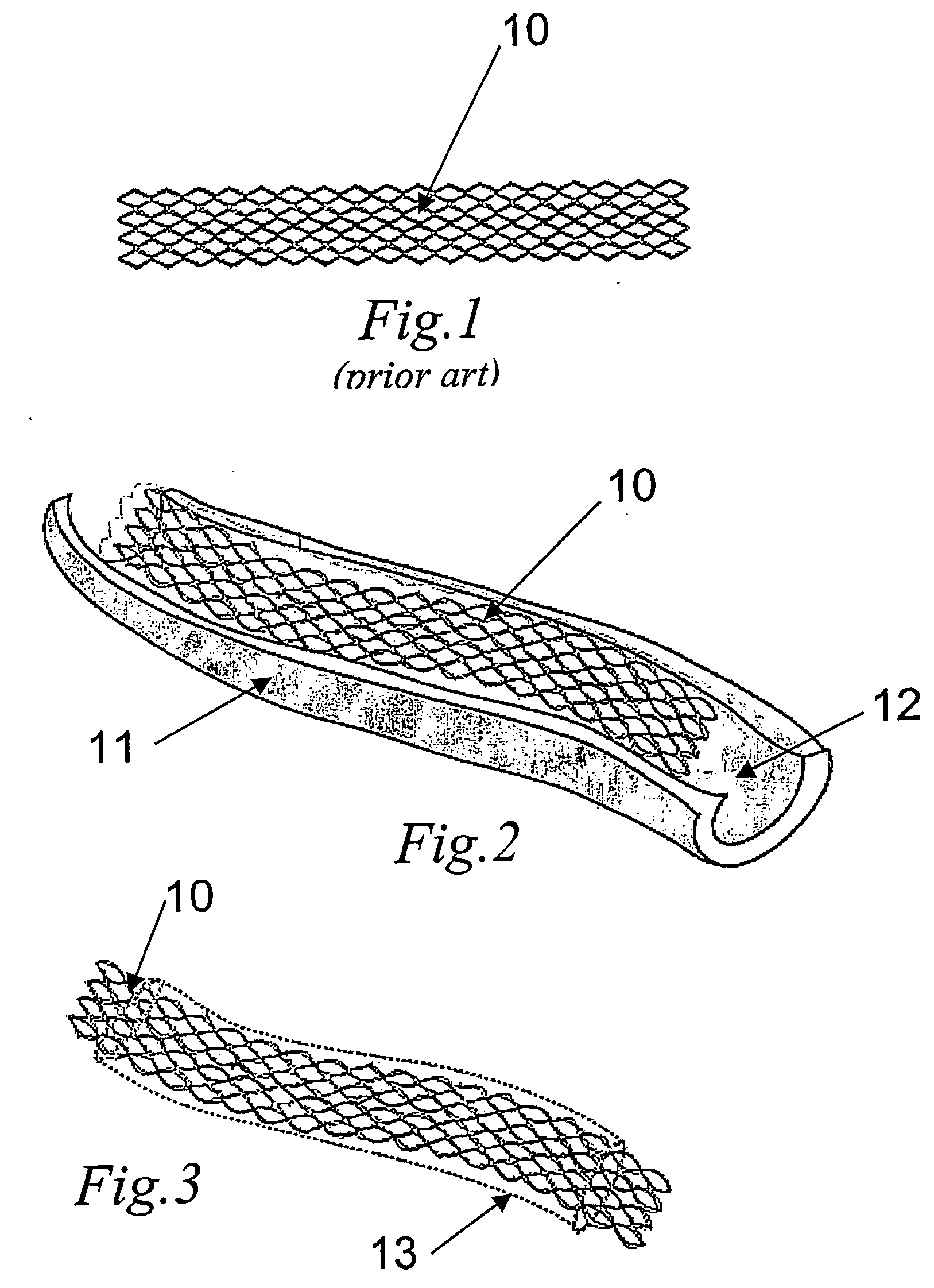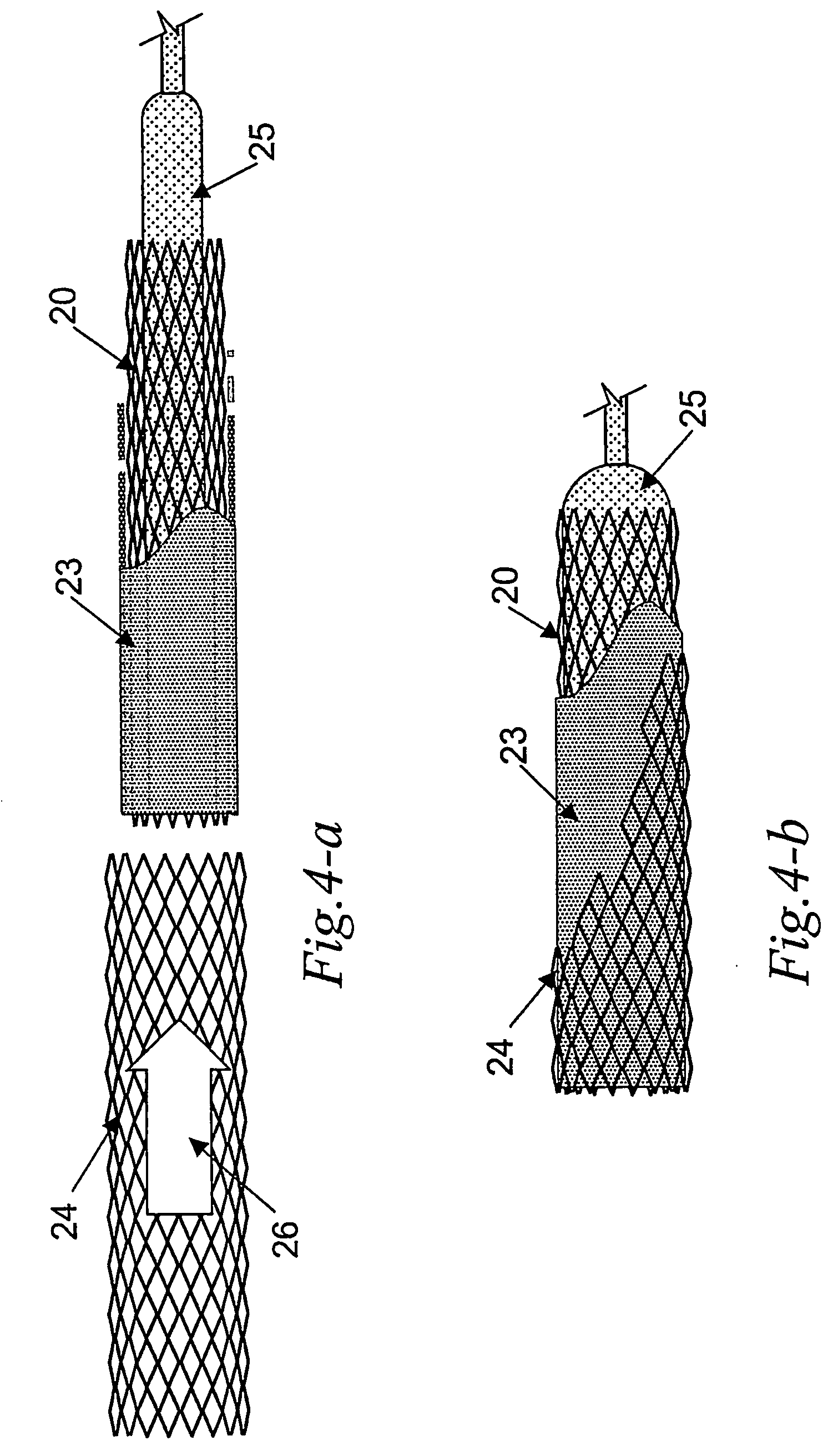Endoprosthesis process to obtain and methods used
- Summary
- Abstract
- Description
- Claims
- Application Information
AI Technical Summary
Benefits of technology
Problems solved by technology
Method used
Image
Examples
Embodiment Construction
[0036] A closer look at FIG. 1 will reveal the traditional stent consisting of a substantially cylindrical body (10) with walls made of a wire mesh of stainless steel, preferably 316LVM, or any other metal with biocompatible features. The inner surface is polished so as to render it as smooth as possible, in order to avoid the adherence of fibrin particles, plaques, etc. The outer surface, on the contrary, is rough so as to promote a better anchorage of the biosynthetic cellulosic membrane.
[0037] The process used to obtain the membrane is shown schematically in FIG. 2. As the figure shows, a stainless steel stent (10) is inserted in a tubular mold (11) of a slightly larger diameter filled with a culture medium inoculated with the bacteria Acetobacter xylinum. The culture medium used presents the following composition:
Peptone5.0g / lYeast extracts5.0g / lNa2HPO42.7g / lCitric acid1.15g / lGlucose20.0g / l
[0038] The invention is based on the fact that the material used in making the mold is ...
PUM
| Property | Measurement | Unit |
|---|---|---|
| Fraction | aaaaa | aaaaa |
| Fraction | aaaaa | aaaaa |
| Time | aaaaa | aaaaa |
Abstract
Description
Claims
Application Information
 Login to View More
Login to View More - R&D
- Intellectual Property
- Life Sciences
- Materials
- Tech Scout
- Unparalleled Data Quality
- Higher Quality Content
- 60% Fewer Hallucinations
Browse by: Latest US Patents, China's latest patents, Technical Efficacy Thesaurus, Application Domain, Technology Topic, Popular Technical Reports.
© 2025 PatSnap. All rights reserved.Legal|Privacy policy|Modern Slavery Act Transparency Statement|Sitemap|About US| Contact US: help@patsnap.com



